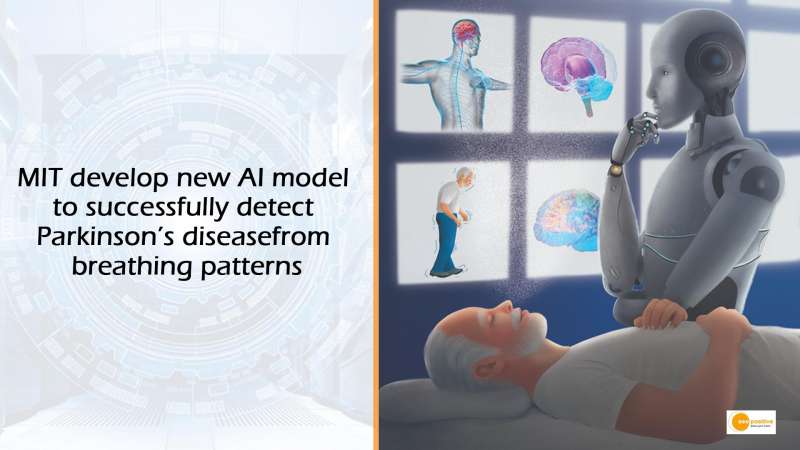

MIT researchers created an early-stage artificial intelligence model that successfully detected Parkinson’s disease from breathing patterns. The model is based on data collected by a device that detects breathing patterns using radio waves in a contactless manner.
Neurological disorders are among the leading causes of disability worldwide, and Parkinson’s disease is the world’s fastest-growing neurological disease. Parkinson’s disease is difficult to diagnose because it is primarily based on the appearance of symptoms such as tremors and slowness, which usually appear several years after the onset of the disease.
The model also estimated the severity and progression of Parkinson’s, in accordance with the Movement Disorder Society Unified Parkinson’s Disease Rating Scale (MDS-UPDRS), which is the standard rating scale used clinically.
The researchers trained the model using nocturnal breathing data (data collected while subjects were sleeping) from various hospitals in the United States as well as some public datasets. After training the model, they tested it on a dataset that had not been used in training and discovered that it diagnosed Parkinson’s disease with an accuracy of about 90% when analysing one night’s sleep data from a patient.
They discovered that analysing sleep data from 12 nights improves the model’s accuracy to 95%.
The link between Parkinson’s disease and breathing has been known since 1817, when James Parkinson discovered it in his research. There has also been previous research into how Parkinson’s patients develop sleep breathing disorders, weakness in the function of respiratory muscles, and degeneration in brainstem areas that control breathing.
Early stages
While MIT’s model is promising, it is still in an early stage of development. “Although the datasets are all from the United States, we note that the datasets have different races and ethnicities. However, we believe it is desirable to validate the model further on more diverse datasets from other countries. We would love to collaborate with medical institutes in India and other countries to extend the research to those communities,” Dina Katabi, co-author of the paper told. Katabi is a principal investigator at MIT Jameel Clinic.
Currently, the AI model is tested using data from either a wearable breathing belt used during polysomnography (sleep study) or a specialised device developed by Katabi and other researchers called the “Emerald Radio Device.” You can see a live demonstration of how the device can capture breathing patterns below.
But there is a possibility of using data from other devices that capture breathing data accurately enough. “Any device that can accurately obtain breathing signals would be suitable for use with our AI model.
Smartphones today do not obtain a sufficiently accurate breathing signal, but it is perceivable that they can do it. Either way, obtaining accurate breathing signals is easy with either our radio device or a
breathing belt,” added Katabi.
There is currently no cure for Parkinson’s disease, but Katabi believes that using this technology for diagnosis could significantly shorten clinical trials for potential treatments, allowing them to be developed more quickly.
This model could also be used for assessment in underserved communities, particularly for those living in areas with limited medical access, and for patients who have difficulty leaving their homes due to disease progression. The researchers also believe that their work and technology could be expanded to detect other neurological diseases such as Alzheimer’s. “But more research and experimentation need to
be done before reaching a firm conclusion on whether that is possible,” commented Katabi.


